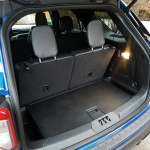
2020 Ford Explorer ST
Class: Midsize Crossover SUV
Miles driven: 488
Fuel used: 15.8 gallons
| CG Report Card | |
|---|---|
| Room and Comfort | B+ |
| Power and Performance | A |
| Fit and Finish | B+ |
| Fuel Economy | C |
| Value | B- |
| Report-card grades are derived from a consensus of test-driver evaluations. All grades are versus other vehicles in the same class. Value grade is for specific trim level evaluated, and may not reflect Consumer Guide's impressions of the entire model lineup. | |
| Big & Tall Comfort | |
| Big Guy | A |
| Tall Guy | A |
| Big & Tall comfort ratings are for front seats only. "Big" rating based on male tester weighing approximately 350 pounds, "Tall" rating based on 6'6"-tall male tester. | |
| Drivetrain | |
| Engine Specs | 400-hp 3.0-liter |
| Engine Type | twin-turbo V6 |
| Transmission | 10-speed automatic |
| Drive Wheels | AWD |
Real-world fuel economy: 16.5
Driving mix: 50% city, 50% highway
EPA-estimated fuel economy: 18/24/20 (city, highway, combined)
Fuel type: Regular gas
Base price: $54,740 (not including $1095 destination charge)
Options on test vehicle: Two-tone roof paint and rear spoiler–includes black window trim and sideview mirror caps ($500), special color ($425)
Price as tested: $59,520
Quick Hits
The great: Robust acceleration; crisp handling for a family-sized vehicle
The good: Plenty of comfort and convenience features; decent ride quality despite sport-tuned suspension and 21-inch wheels
The not so good: Subpar observed fuel economy; steep pricing for a mainstream-brand vehicle
More Explorer price and availability information
John Biel
If you’re old enough to drive, you’ve seen a lot of Ford Explorers in your life, but you’ve never seen one exactly like this.
For the midsize SUV’s first 20 years (1991-2010) it was a body-on-frame vehicle with a longitudinal driveline, base rear-wheel drive, and optional 4-wheel- or all-wheel-drive systems. In its next nine seasons, through 2019, it had unitized construction with a transverse front-wheel-drive power unit; AWD was available. Now the sixth-generation Explorer that bows for 2020 returns to “north-south” drive with the motivation for non-AWD jobs in back, while it retains a unit-body platform. The latest shift is in pursuit of improved weight balance that heightens ride comfort and handling precision.

Consumer Guide tested a newcomer to the Explorer line for 2020, the performance-oriented ST with a 400-horsepower V6, sport-tuned suspension, and optional 21-inch wheels and 275/45R21 tires. Explorers with the EcoBoost V6—the ST and the less-powerful Platinum—are only available with all-wheel drive.
The twin-turbo ST engine generates 35 more horsepower than the V6 used in the previous Sport model. (That 365-horse job remains standard in the 2020 Platinum.) Its healthy 415 lb-ft of torque also bests the tamer engine’s output by 35. Clicked into “Sport” mode, the ST jumps away from standing starts, seemingly impervious to any kind of turbo lag, and with a decent exhaust bellow. There’s an eager feel well into the midrange. Even in “Normal” mode the ST cruises easily at high expressway speeds. Towing capacity is 5600 pounds, which is 600 more than the maximum pull available from a ’19 Explorer, and standard trailer sway control helps maintain order when towing.
Test Drive: 2020 BMW X3 M Competition
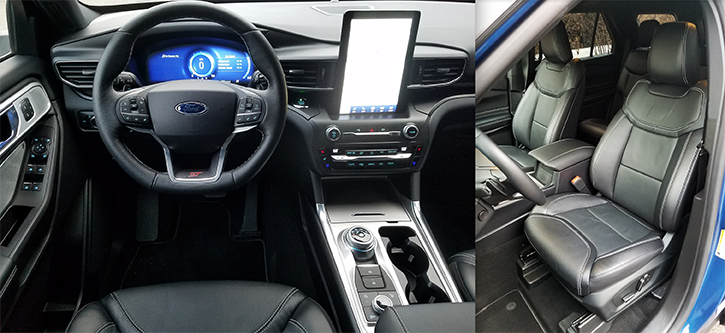
Across the board, the new Explorers adopt the 10-speed automatic transmission developed jointly with General Motors. In the ST, Sport-mode shifts are perceptibly positive, to the point that Normal, with its desire to quickly get you into higher gas-saving gears, can feel a little clunky in certain around-town situations as it spits out upshifts. The ST’s EPA fuel-mileage estimates are 18 mpg in city driving, 24 on the highway, and 20 in combined usage. This driver didn’t see that kind of mileage, however, with 17.1 mpg after a 174.6-mile stint that included 40 percent city-type operation.
2020 Chicago Auto Show: 2021 Genesis GV80
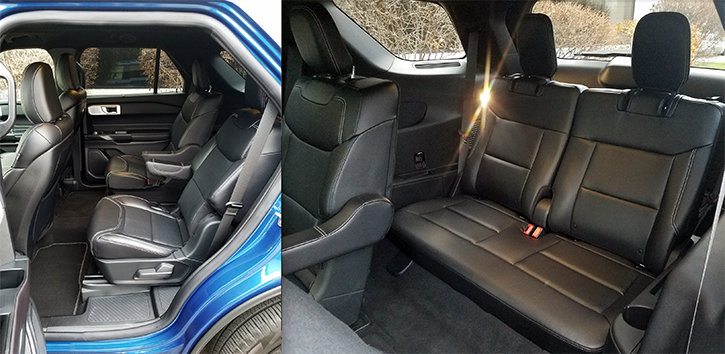
Like powertrain performance, handling gets sharper in Sport—not that it’s particularly sloppy otherwise. (For more cornering grip, ST owners can select Michelin summer tires that were not included on CG’s test vehicle.) Steering becomes decidedly firmer, and ride stiffens up, too, but doesn’t go overboard into harsh. It seems that weight rebalancing has done its job.
The Explorer ST starts out at $55,835 with delivery. In addition to the performance bits already mentioned, it is marked by a blacked-out grille and headlight bezels, muscular-looking black lower-body cladding, black roof rails, quad-tip dual-exhaust outlets, an ST-badged leather-wrapped and heated steering wheel, and heated and ventilated sport buckets for front seats. Among the options added to the $59,520 test truck were the ST Street Pack with the 21-inch wheels and red-painted disc-brake calipers, and the Premium Technology Package that includes massaging multicontour front seats.
Hummer Is Back, And This Time It’s Electric
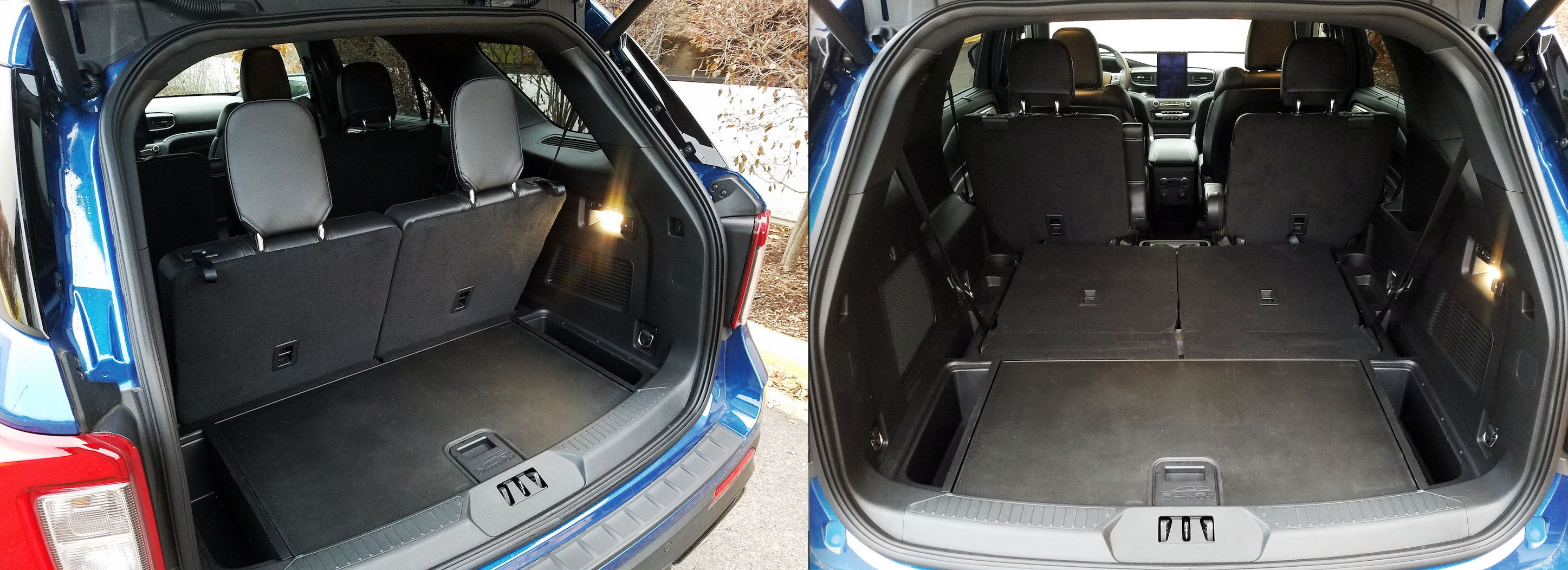
The front seats provide good side grip during aggressive driving but don’t stint on comfort the rest of the time—and the massage function was pretty nice. While some Explorers are set up to carry seven passengers, the ST is confined to six thanks to standard second-row captain’s chairs. These provide decent support, and they’re heated. Two third-row seats are best suited for kids, though smaller adults might be able to hang in there for a limited time. Middle seats track forward to assist back-row entry and exit. There’s good headroom and legroom in the front two rows. Step-in height isn’t particularly challenging, but over-the-shoulder driver vision is limited by the thickness of the roof pillars.
There are lots of soft-surface areas to be found on the dash, console, and all doors. City Silver accent stitching ran throughout the Ebony interior on the test vehicle. Instruments register as a colorful and legible electronic display that changes with the driving modes as chosen via console dial. Audio presets can be made fairly directly on the Sync3 touchscreen, which in this case was the 10.1-inch vertical “portrait” type included in the Premium Tech option. Tri-zone climate controls and front-seat heating/cooling are handled by a separate cluster of buttons, with repetitive-push levers for temperature settings. Other included convenience and safety technologies include Active Park Assist, voice-activated navigation, and the Ford Co-Pilot360 Assist+ suite of driving aids including adaptive cruise control and automatic emergency braking.
First Spin: 2020 Lincoln Aviator
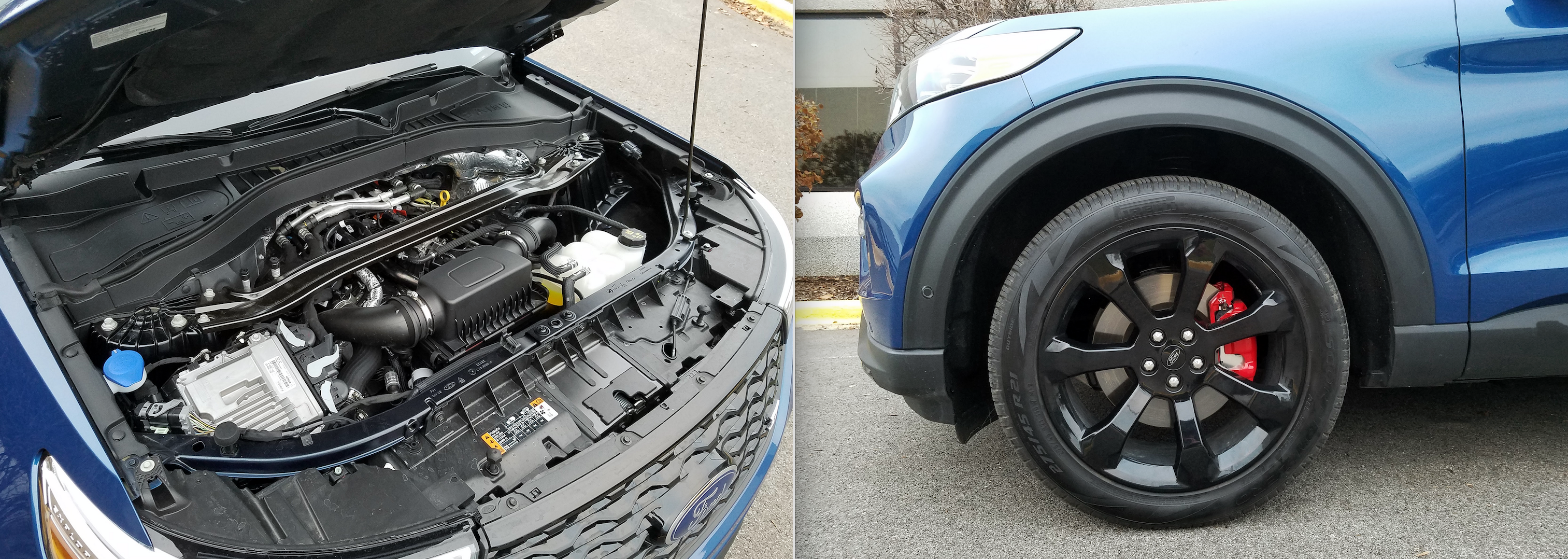
Cabin storage rests with an ample glove box and a lighted console box with a small-item tray. A covered bin at the front of the console holds device inputs and a standard wireless charger. There are two exposed cup holders in the console for front passengers. The second row has exposed cup holders and an open bin within a low “consolette” parked between the seats. For additional storage, pouches are on the back of each front seat. The third row has cup holders and open trays molded into the hard-plastic sidewalls.
Cargo space ranges from a modest 18.2 cubic feet with all seats up (though there is some bonus room under the floor panel and in troughs at the sides) to 87.8 cubic feet behind the front seats. Rear seats power up and down from buttons in the sidewall. They rest pretty flat to open good load space. When the second-row seats fold there is a gap behind them and, of course, between them, so some care will have to be taken when loading really large objects. A hands-free power liftgate is standard.
The ST may seem costlier in initial price and, perhaps, fuel economy than some practical-minded SUV buyers will want to bear. Still, it appears that the pendulum swings of design throughout the Explorer’s history have come to a nice new point of equilibrium.
Test Drive: 2019 Jaguar F-Pace SVR

Listen to the Consumer Guide Car Stuff Podcast
Ford Explorer ST Review











